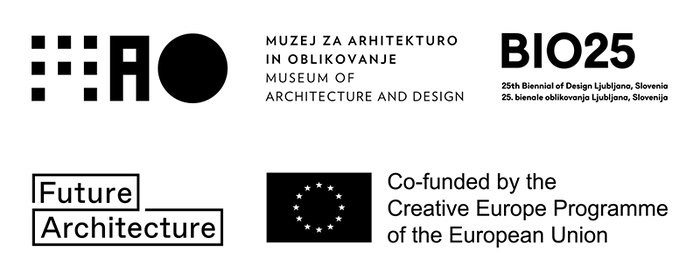A constellation of micro-interventions in Nove Fužine, Ljubljana
September 14, 2016–October 29, 2017
Museum of Architecture and Design (MAO), Ljubljana
Rusjanov trg 7
SI- 1000 Ljubljana
Slovenia
Hours: Tuesday–Sunday 10am–6pm
T +386 1 548 42 70
mao@mao.si
MAO presents Common Places, a commissioned project by Chilean-French architecture office Plan Común and the Portuguese landscape architect Tiago Torres-Campos. Common Places is a series of brick constructions located in Nove Fužine, a part of Ljubljana where MAO is situated.
Plan Común and Tiago Torres-Campos have designed five multifunctional plinths, which are strategically positioned over the entire neighbourhood: in the museum courtyard, along the river, in the historic garden, in front of the community centre and behind the famous city bus stop, designed by Saša J. Mächtig in the 1960s. The plinths build, encourage and reinforce different uses of public space and create specific relations with the surroundings. They intend to become platforms for contemplation, meeting points, stages for events, concerts or lectures, or simply structures on which to sit and enjoy the communal life of the neighbourhood. In order to encourage passers-by to think about these spaces, Slovenian writer Goran Vojnović wrote short stories about the selected sites in which he reflects youth in the neighbourhood.
The limitations inherent in the project, in terms of timeframe, administrative work and budget, have been transformed into opportunities that concentrated the constellation around the easternmost urban enclave of Nove Fužine and MAO. This allowed for a more focused, even precise set of decisions on the interventions and the public space upon which they act.
The neighbourhood Nove Fužine was built in the 1980s in the eastern reaches of Ljubljana close to the Ljubljanica River, and is today home to some 18,000 inhabitants. Instead of producing a pavilion—a typology over-exploited by contemporary architecture—the authors conceived a constellation of public space micro-interventions related to built environments or pre-existing natural conditions within the Nove Fužine housing neighbourhood. This organized system aims at upgrading a series of common places identified on site by forging meaningful connections with their respective histories, spatial attributes and atmosphere, their cultural role within the structural public space, and social relevance within the community. By working closely together as a constellation, the interventions also make a gesture toward developing a distinct relationship between the museum’s public grounds and its surroundings in an effort to strengthen the connection and encourage unexpected encounters between the local residents and visitors to the museum. Upgrading also becomes an experience, one of expanding the energy of and synergies between the neighbourhood, MAO and BIO 25, as well as promoting to different types of both general and more specialized audiences.
The opening of the exhibition will coincide with the kickoff event for 25th Biennial of Design: Faraway, So Close, also organised by MAO and curated by Angela Rui and Maja Vardjan. The kickoff event will see seven teams of participants start their work with local experts and international creatives: Studio Formafantasma, Matali Crasset, Point Supreme, Didier Faustino, Studio Mischer’Traxler, Studio Folder and Odo Fioravanti.
The exhibition is part of Future Architecture platform programme. Future Architecture platform is a European platform of architecture museums, festivals and producers that highlights the emerging generation of talents in various disciplines and enables them to present their ideas about the future of cities and architecture.
Authors: Plan Común (Felipe de Ferrari, Diego Grass, Kim Courreges, Thomas Batzenschlager), Tiago Torres-Campos
Production: MAO
The project is part of the Future Architecture and Faraway So Close—25th Biennial of Design, Ljubljana (BIO 25).



